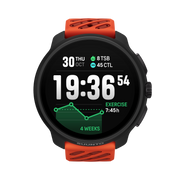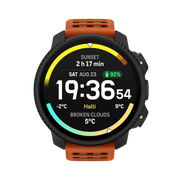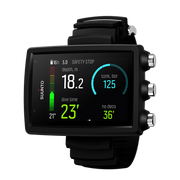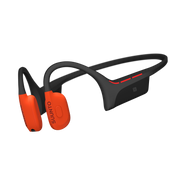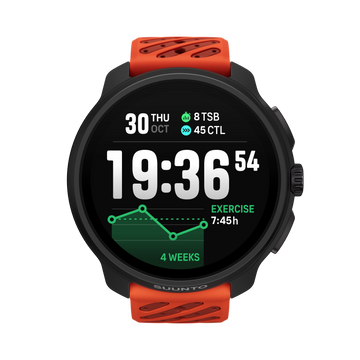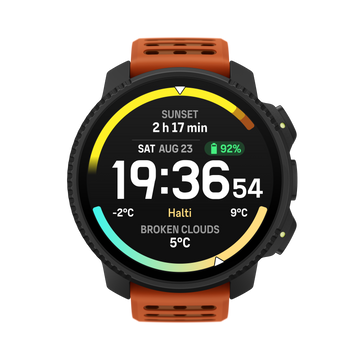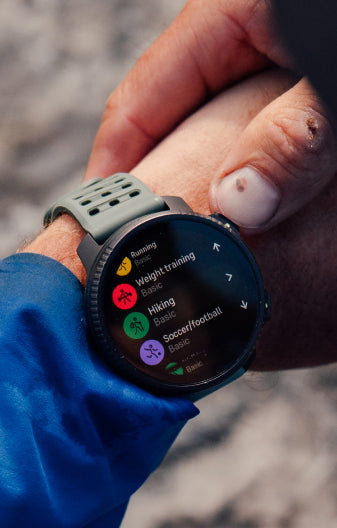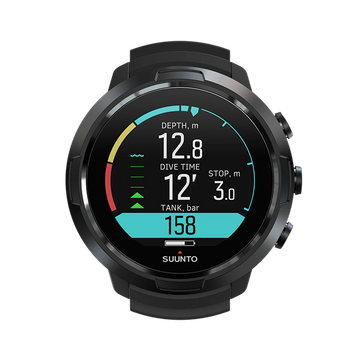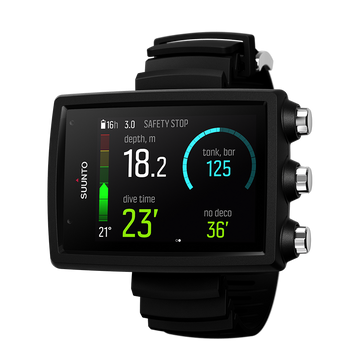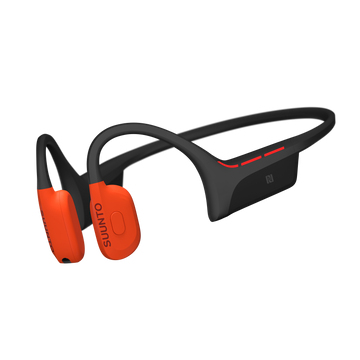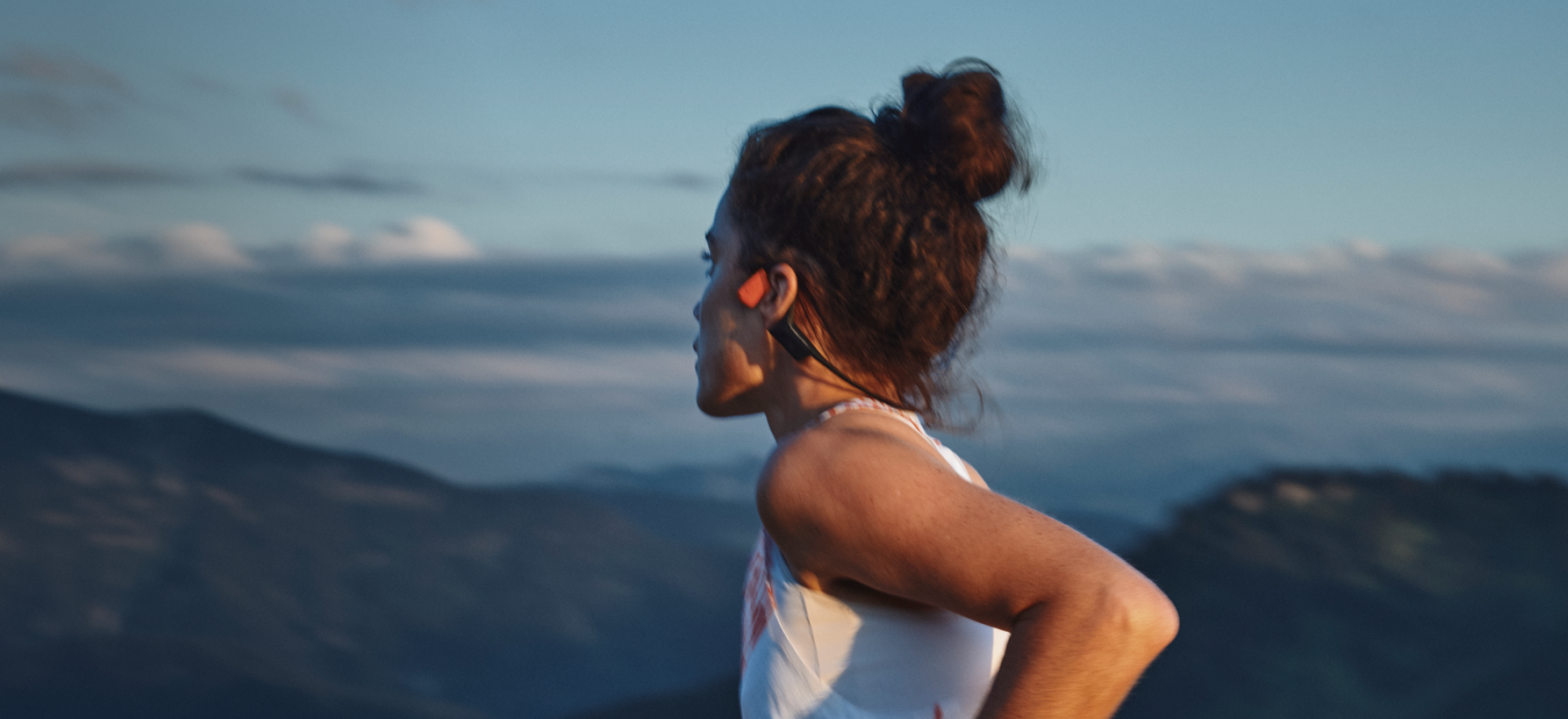

Suunto Blog

Under thin ice: Jill Heinerth captures climate change
Part of being an explorer is being away from home for long stretches. “Some people say that the two greatest times in the life of an explorer are leaving home and coming home,” Suunto ambassador Jill Heinerth says. “We will each feel loneliness and perhaps regret about moments away from those we love.”
“We feel an overwhelming imperative to document and share,” Jill Heinerth says.
But there are important reasons, sometimes for the greater good, that compel Heinerth and her peers to explore the ends, and depths of the planet. “We feel an overwhelming imperative to document and share,” she says. “When we have a chance to do really good work, telling important stories for humanity, then we are at the top of our game. Adventure fuels our souls.”
Telling an important story for humanity is behind Heinerth recently spending months in Greenland and the Canadian north. She has been on three expeditions to the Arctic to capture footage for an upcoming documentary film about the effects of climate change, called Under Thin Ice. She says the loss of sea ice is changing everything.
“The Arctic is warming faster than any other place on earth, so the changes are quite remarkable, even from year to year,” Heinerth says. “We learn from indigenous people that there are many new things they must adapt to. The sea ice disappears earlier each year. The multi-year ice is lessening and the migrations of fish and mammals are changing with the warming temperatures.
“Atlantic cod move further north into the territory of Arctic cod, competing for food. Bowhead and humpback whales are now seen in the same place at the same time. They used to arrive at different times, spread out by a couple of weeks. If everyone arrives at the buffet at the same time will they wipe out the food stocks? We know for sure that everything is changing.”
The sea ice disappears earlier each year.
Human-caused climate change is also impacting dive conditions, making it more challenging for Heinerth to do her job. “The bay in Ilulissat was filled with smaller bergs than normal, but it was choked with rapidly melting ice,” she says. “The freshwater mixes with seawater, creating a halocline that is difficult to focus through.”
“The melting ice also fizzes, filling the water with tiny bubbles. At times, we were in magically beautiful ice environments that were difficult to film. Warmer ocean temperatures also spawn more green algae that affects visibility.”
"It can take weeks or months of waiting to get the single opportunity for a great shot.”
“Any time you film marine mammals, there is a challenge of first finding them and then finding good and safe conditions for filming them. It can take weeks or months of waiting to get the single opportunity for a great shot.”
Heinerth, however, encountered more than enough wildlife for the documentary. On one day she got particularly lucky. Here is a passage from her journal on lucky day seven of her expedition to Nunavut, Canada’s northernmost territory:
Yesterday’s impossibly dangerous mess of jumbled ice is today’s floe edge, where ice meets the ocean. We are able to walk right to the margin and peer down into the black water. It is alive with narwhals and belugas. I spot a rare bowhead whale and we run for the cameras to try to capture the sight. The sounds are intense. Deep breathing and forced exhalations fill the air with moist spouts from dozens of blowholes. I can see narwhal intermingling with belugas and can hear the canary chirps of the white whales. Groups of seven or eight are huddled together on the surface talking and breathing up to prepare for a dive under the ice which appears to be about four to six feet thick.
Follow Jill Heinerth’s adventures on IntoThePlanet.com. And visit the official Facebook page for more information about the documentary Under Thin Ice.
GET BEHIND THE SCENES OF FILMING "UNDER THIN ICE"

4 reasons rock climbers should learn freediving
© Mike Board
When an earthquake struck Indonesia in August, Kate Middleton’s home on the island Gili Trawangan (neighbouring Bali) was shaken, but not destroyed. “We were lucky to have very little damage, just a couple of walls in the yoga hall,” she says.
The 30-year-old Canadian-New Zealander owns a yoga studio, freediving school and organic cafe on the island. It’s in the clear waters, teeming with exotic marine life, around the island that Middleton trains as a competitive freediver.
Click here to donate to the Lombok Earthquake Support effort underway.
She wasn’t on Gili when the earthquake struck; she was thousands of kilometers away on a different island: Greece’s rock climbing mecca Kalymnous, in the southeastern Aegean sea.
“In 2015, I gifted myself a trip here to learn to rock climb,” the gold medalist says. “I did a beginners and intermediate course back to back, and was totally hooked. The following summer I returned and stayed for two months, climbing almost every day. Now I’m back again.”
© Kalyja Rain
Beginner’s mind
Currently working on climbing a grade 6c route, Middleton is focused on cultivating presence on her climbs, rather than being concerned about numbers and statistics. Competition freediving demands, structured, disciplined training, and what she calls a “monofocus”.
“What I love about both trail running and rock climbing is it’s really easy for me to maintain a ‘beginners mind’ with them,” Middleton says.
Here are her four reasons rock climbers should learn freediving
© Kate Middleton
1. Relaxing into it
The biggest challenge for people new to freediving is learning to relax. “Most of us know how to push and force our way into things, instead of knowing how to relax into our power,” Middleton says. In freediving, relaxation is key for being able to dive deeply on a single breath. Relaxation calms the breath and reduces the heart rate, which conserves oxygen. Tension, stress, force increase the heart rate, wasting energy and oxygen.
“I see where that crosses over into climbing,” she says. “I’ve seen my friends practically float up 50 m overhangs, and I feel they are relaxing into their ability, rather than forcing it. I also see a lot of climbers who climb in a different way, that is more aggressive, and that doesn’t seem to be as efficient or enjoyable.”
Click here to read more about Middelton’s yoga and freediving journey.
2. Breathing well
“Freediving gives you a really great awareness of your breathing and breathing patterns,” Middleton says. “Any time the breath is getting out of balance, maybe due to stress, it’s very easy to pick up on that. This has helped me a lot when I’m climbing. I notice when I’m in the crux of a climb, or when fear starts to edge in, and I start to hold my breath. I then take some deeper breaths, with a steadier rhythm, and then I come back to presence and can continue climbing.”
3. Mastering fear
“Freediving has given me such a sensitivity to what’s happening with me. Because relaxation is so critical for freediving, especial deep diving, I can see so clearly how fear manifests in the body and how tension escalates. If I can catch it early, then it’s a lot easier to regulate and work with.”
4. Finding your power
When most people hear about freediving it seems a little mad, dangerous, even suicidal. But in actual fact, learned properly, it is a safe sport that shows us we can do so much more than we believe. “What I’ve learned from freediving is this body is so capable,” Middleton says. “I know without me having to understand it, that my body knows how to adapt and wants to adapt. I thrive in these environments that aren’t our everyday comfortable spaces. That gives me a lot of trust.”
True grit
Middleton says it’s not only freediving helping her to climb, but vice versa, too. “I’m getting more grit from the climbing,” she says. “When I fall, it hurts a bit more. I have to want it more to get over the crux of a climb. I fail a lot more. It would be easy for me to give up and say it’s beyond me, and stick to easy climbs. I’m learning to tap into the inner determination and fire that really wants to overcome the hurdle.”
Lead image: © Mike Board
More stories about freediving:
Learning the joy of freediving.
Is the ultimate cross-training ... breathing?
The one thing every freediver needs.
How deep can we go?
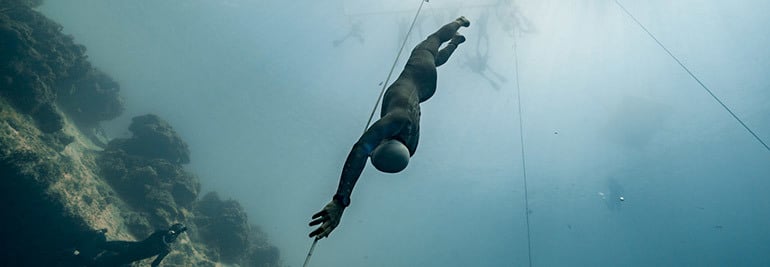
Ocean plastics are a problem and no one knows better than divers
For anyone who spends a serious amount of time either working or playing in the ocean, it’s a near-impossible problem to ignore: plastics are filling our oceans. Even if your particular stretch of sand and water still appears pristine, it likely isn’t – as these materials (slowly) break down, they become microplastics – an ever more difficult problem to understand and deal with. In Long Island, the Bahamas, home to world-champion freediver William Trubridge and world-class freedive location Dean’s Blue Hole, it’s an everyday problem. We talked to the man who lives quite literally in the ocean what he is doing about it.
This is an issue you care about.
I have to – it’s in my backyard. Worldwide, plastic pollution – we reached the tipping point a long time ago. The Queen of England has banned single-use plastics from the castle! I’m an ambassador for the Ocean Conservation Alliance, run by Doug Woodring, who was one of the original people to discover and explore the Pacific Garbage Patch. His organization has done a lot for our oceans with things like their Plastic Disclosure Project – where they help businesses track their plastic use and offset it, much like companies do with the carbon footprint.
What does the ocean plastic problem mean for you?
Locally here – especially on my island – Long Island – the swell and tradewinds push garbage all to the north end of the island and it all collects in the bays and coves. And Dean’s Blue Hole is one of them. So we organize cleanups during events and competition, and we keep a bucket and just chuck in a little bit each day.
Where is the garbage coming from?
There’s a lot of theories about how plastic is getting in the water, and I think a lot of them are misguided. A lot of people blame cruise ships, but that’s not the case – you can see it in the trash itself.
More than half of the plastics that wash up in the beaches in the Bahamas are these little plastic bags of drinking water – in poorer countries, they get most of their drinking water from little 250 ml bags. They just tear off a corner and chuck it in the rubbish – but the rubbish ends up in the sea. And we’re downstream from them.
A huge amount of the plastic waste is those plastic bags. There’s also Petrol cans, cheap fishing nets. We’ll grab 20 or 30 toothbrushes in a day – the kind sold in Haiti or the Dominican Republic. They don’t have the infrastructure for waste management. Words are in French or Spanish. For us, there’s no question where it’s coming from!
And not only does the trash pollute, it doesn’t degrade, it just turns into smaller pieces – microplastics. For every plastic bag we see, there are thousands of millions of smaller particles you can’t see. Those all enter the food chain. So sea life is basically eating plastic all the time. And we’re at the top of that food chain. That can’t be good. Huge quantities of toxins are in the fish that we eat, and it’s killing sea life as well.
How can divers help?
The most effective way for divers is to help is to reduce their own use – less single-use plastic. Straws. Bring your own bags to the supermarket. Awareness of that is becoming more common – A lot of regions - cities, countries, are banning plastic bags. There is a ground shift movement to less plastic.
That’s in the developed world. But we also need to see that in the less developed world, and it’s a lot more difficult there. When you’re visiting those kinds of countries, put pressure on the local businesses, to take a more thoughtful approach to recycling and use.
And talk about it. Because most people simply don’t know. If you go into a supermarket in Honduras, talk about it. The more people that bring that message, the better. It will have an effect.
Doing cleanups and tackling that end of the problem helps, but not as much going to the source. Changing your own behavior and leading by example.
You also have some pretty crazy ideas about how to help.
One of the things I wanted to do, and so far it’s been a failure: I’d love to get the Bahamas to convert plastic to diesel. We have to ship in every once of diesel in the islands. There are machines – they’re not cheap – but you chuck in plastic and outcomes diesel. But in the end it’s quite effective if you have a good central hub. That’s a profitable way of cleaning up, but the initial investment is quite high.
You’ve also gone out on a limb about the plastic water bags.
Yeah – you know, some beaches are just carpeted with these bags. There are machines that obviously create this bag. The business that makes these machines in American, and basically aware of the fact that they’re creating a huge amount of waste that can’t be managed. So I got the CEO on the phone. Initially he was evasive, but he admitted that particular product that they are supplying is doing a huge amount of damage. His argument was that it’s better than bodies on the streets – people dying from clean water.
It’s hard to argue this defense – because it’s not completely wrong. So I’ve got in touch with a bunch of companies that work with biodegradable materials. Of course, any material that is biodegradable will biodegrade with water. So what’s left? The only other way is to change the whole system. In the Bahamas we use 5-gallon plastic jugs for drinking. But in a lot of those countries they can’t even afford to buy one or two jugs because they’re living so hand to mouth that they won’t even buy a jug. We need a few million jugs, and we get the government to ban plastic bags. Not as simple as it sounds, but we’ve got to get there somehow.
Learn more about the problems facing our ocean at Will’s efforts at the Ocean Recovery Alliance – and please, do what you can to help battle the problem!
Main image © Daan Verhoeven / Vertical Blue
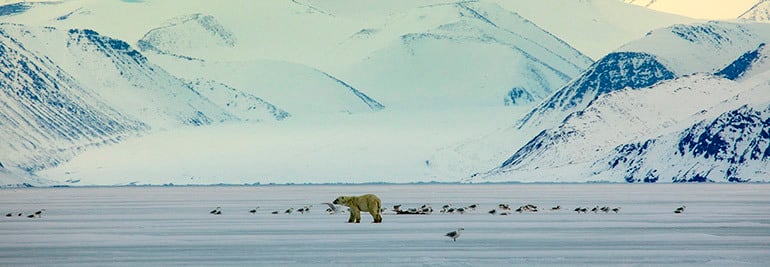
Winning awards and making movies: just another year in the life of Jill Heinerth
If Jill Heinerth didn’t spend so much time underwater, we’d be a little more comfortable making this statement: the Canadian-American explorer is so darn busy, she barely has time to breathe. Between her expeditions, documentary filming, and you know, winning lifetime achievement awards, it’s a little tough to find a free moment – but unsurprisingly for those who know her, Jill was happy to fill us in. (And don’t worry – she’s got plenty of time to breathe.)
First, the awards. What did you win?
At the TekDiveUSA biennial conference, I was surprised with the Lifetime Achievement Award from the technical diving industry. In a fun tradition, they run a cave diving line into the audience to surprise the recipient. I was then blindfolded and had to follow the safety line to the stage while a show about my life was playing for the crowd.
It came with a trophy… and quite the compliment.
The award was a perfect little action figure of me in my diving and camera gear that was made by an artist in Poland. The citation read, “For a lifetime of consistent contribution and discovery that has opened up the field of technical diving.” But what really humbled me was that I was described as "our generation's Cousteau."
I still feel quite speechless. I am the first woman to be recognized for the honor.
Congratulations! On to the future. Where are you going to be this summer?
Filming in the Arctic, filming with French-Canadian filmmaker Mario Cyr. We’re working on a film documenting climate change, dramatic changes in the sea ice. We'll be working with local Inuit elders to hear about their observations and adaptations. We’ll be in Arctic Bay, Repulse Bay and Greenland.
You’re in a hurry.
The climate in the Arctic is changing twice as fast as anywhere else on earth. The sea ice sets up later and breaks up earlier each year. In fact, we had to move up our filming by a month due to the receding ice. Our climate change doc is being thwarted by climate change! Our Inuit hosts called us and recommended that we hurry north as soon as possible due to unprecedented break up this year.
So basically: ice is melting way to fast.
If we lose Arctic sea ice, we lose an important regulating function on global temperature. The white ice reflects the sun's rays back into the atmosphere. The darker open sea, absorbs heat, further increasing the feedback loop that rises ocean temperatures and ultimates affects the global circulation of water currents. Furthermore, both the people of the north and the wildlife rely on sea ice. The Inuit call the sea ice, "the land" since it represents their hunting ground and their ability to travel to other places. The wildlife also hunt on "the land.”
This is a big problem!
The entire food web of the Arctic relies on sea ice. From the algae beneath its surface that feed the zooplankton to the polar bears that roam in search of seals, all organisms use the ice as a part of sustaining their feeding activities.
To learn more about Jill’s Into the Arctic on the Edge film project, check out the website – and be sure to check out the teaser for her film below.
WATCH ARCTIC ON THE EDGE

What you absolutely, positively, must bring and do on your first dive holiday
Packing for vacation should be easy – a couple swimsuits, a pair of flip-flops, some sunscreen, and you’re good to go – right? Not if you’re going diving. To say it’s an equipment-intensive sport is putting it lightly. Good news: you can get your tanks at almost any dive location – so at least you won’t have to put down for overweight baggage fees. But there are a few key items you’re probably going to want. Suunto’s Alec Jones has spent the good part of a decade at the dive paradise of Sharm-El-Sheik as a dive instructor – so he’s a qualified expert.
First off, do a holiday
A dive holiday may sound extravagant, or expensive – but it’s one of the best ways to expand your horizons. “You’ll encounter different conditions, visibility, wildlife – you name it. Diving is about exploration!” says Alec.
Your own fins, mask and snorkel
Fins and masks are pressure points – you get the wrong fit, and you’re going to be uncomfortable all day, and that makes diving less than fun. At that point you might as well chuck in a snorkel. “Rental kit often isn’t so nice,” says Alec. “Even if you’re just getting into it, I really recommend getting a decent, properly fitting mask, and some decent fins.” And if you’re someone who would call themselves a germaphobe, you might, uh, want your own wetsuit, too.
Dry Bags, sunscreen and hydration
You’re probably going to be spending a lot – a lot – of time on a boat in the sun. Sunscreen you know about – but what you might not realize is how much you’ll get dehydrated. Add in that a lot of other counties purify their water – you won’t be getting minerals you’re used to – and it’s a recipe for dehydration. “A lot of people would come to dive in Egypt, get sick, and blame something in the water – but it’s actually dehydration!” says Jones.
Another great thing to bring along? Small or medium-sized dry bags to drag out on the boat – useful for electronics or just keeping a dry t-shirt nearby.
Gaffer tape and zip ties
Why? You don’t know yet. Just bring ‘em.
A dive computer you know
Your dive computer is an essential piece of kit – and since it’s a little complicated, it’s great to go with something you know. The new Suunto EON Core is an easy-to-use, Bluetooth®-equipped dive computer that will log every meter of every dive. With your own kit, you can pre-load it with your own dive plan – a nice bonus. Another hot tip? A portable power bank to keep your dive computer charged.
Keep going further
Water covers over 70% of our planet – there are lots of places to go. “For Europeans, the Red Sea is really close,” Jones says. “But why stop there? There’s Indonesia, the Philippines, Malaysia, the Cenotes in Mexico, the Florida Keys, Costa Rica, the Galapagos – the list is really endless!”
Do everything right, and you’ll have the experience of a lifetime – and you might even make some new friends. “I’ve seen a lot of solo divers come down and make friends that they’ll keep for life,” says Alec. “Now they come back year after year to dive together.”
READ ALSO
A pro diver’s essential tips for newbie divers
10 tips to take amazing underwater photos

You haven’t understood free diving until you’ve read this
Will Trubridge , free diving legend, has written his memoir – and it’s a proper deep dive into one of the most interesting lives ever lived.
Freediving is not, as one might expect, a journey of meters or minutes – it’s the journey of a lifetime. While in the global scale of distance and time, a free diver’s trips to the relative shallowest depths of the oceans are small – the position one must put one’s self in to make such a dive requires immense dedication, patience, training and time.
Few can tell that journey better than world champion William Trubridge. In his new book, Oxygen, he invites us to join him for his life’s journey, and trust us when we tell you, what a journey it has been. To call his childhood ‘unorthodox’ would be putting lightly, or perhaps politely – born in England to world-wandering parents, he was traveling the world before he could walk. About that, in fact – he had to learn to walk twice. The first time on a boat – and the second time when the ground wasn’t moving beneath his feet. With his older brother and parents, they traversed the world, taking harbor in the Galapagos, the British Virgin Islands, South Pacific, and more. There were times where they wouldn’t see land for months at a time – including a 5500 km crossing to the Marquesas.
The obsession with the deep came early. Diving was a necessity of boat life. He recalls being impressed with their father, who dove 18 m to work on the boat’s anchor. When they met another boat family, led by a Frenchman named Benoît who could dive to a depth of 27 m, that depth seemed as deep as the sea would go. Little did William know he’d be trying for four times that depth a couple decades later.
Will sat down to write the book – for several hours a day, over many months after encouragement from friends and his agent Jason Chambers. He’s long-held fascination with the written word – something he delves into over the pages of his memoir – but the long format was something yet untried. One thing should be made clear: although you can learn a lot about the sport, it’s not a tutorial on free-diving.
“I tried to write it in a way that would explain the sport to those who haven't encountered freediving, giving a glimpse of how beautiful and peaceful it is,” says Will. “I also tried to include descriptions that might allow other freedivers to get a feel for my approach, the way I train, and why I've stuck with the sport.”
The meandering pages take you both through the days of Will’s life and the depths of his dives, digging into both the mindset he needs to be in to make them, the risks of being underwater, and how free diving happens mostly in your head. For someone who’s already gotten a taste of the deep, or someone who wants to, it’s a must-read.
Find Will’s book available as paperback or eBook on Amazon.com.
